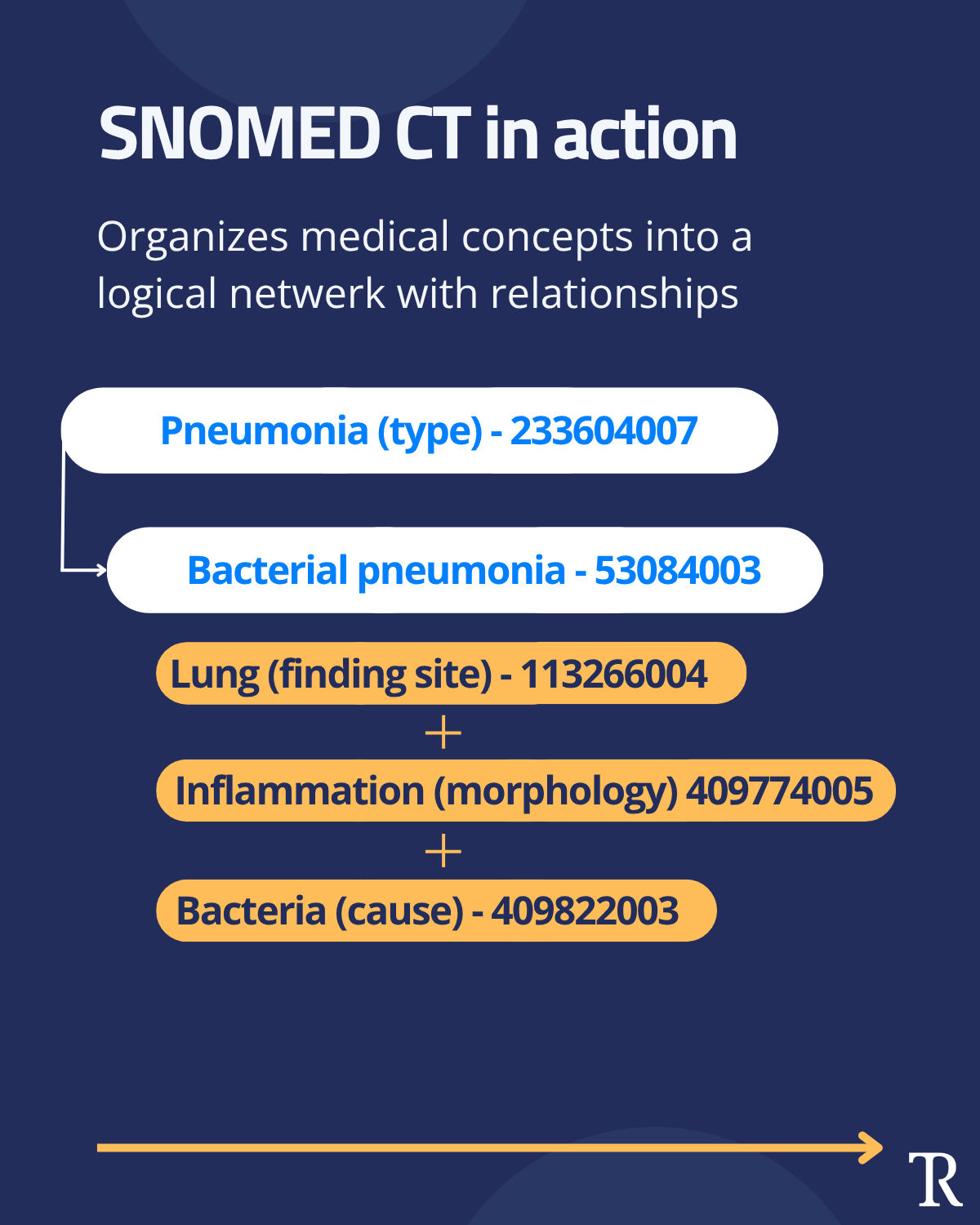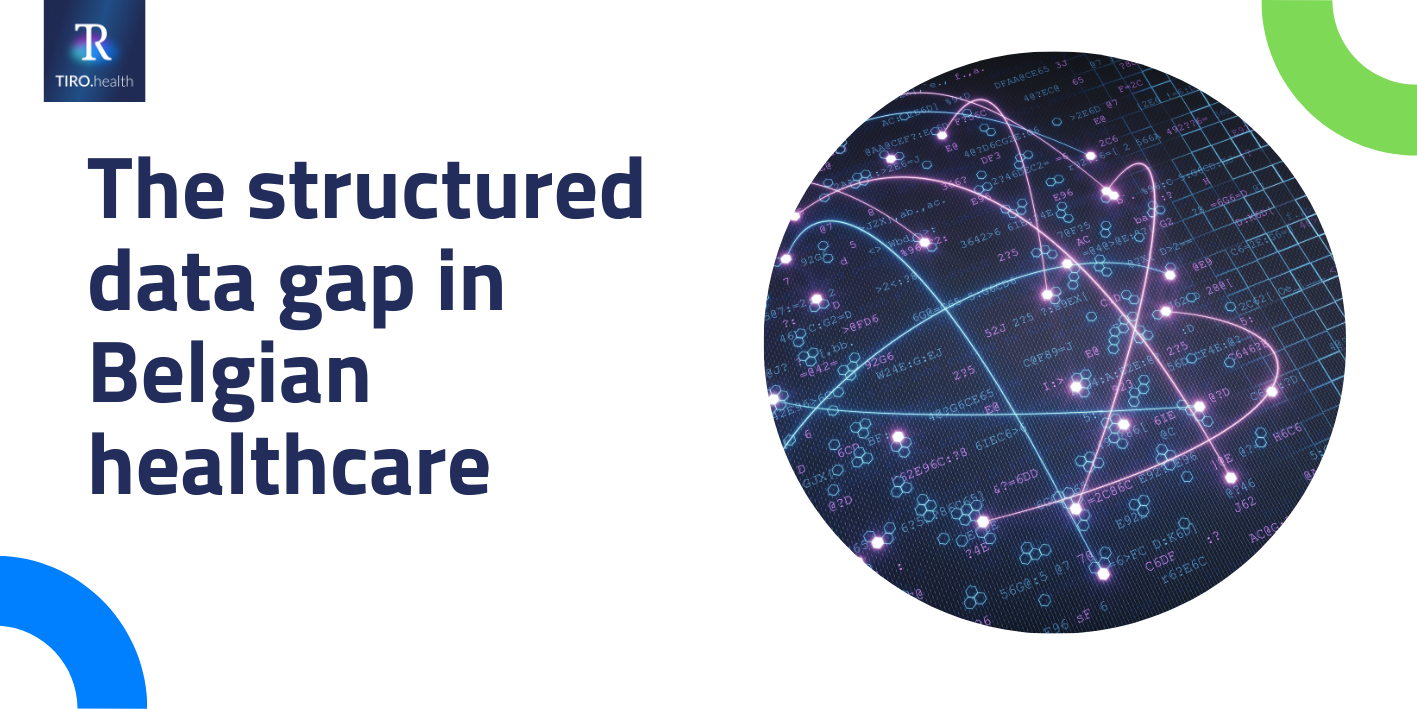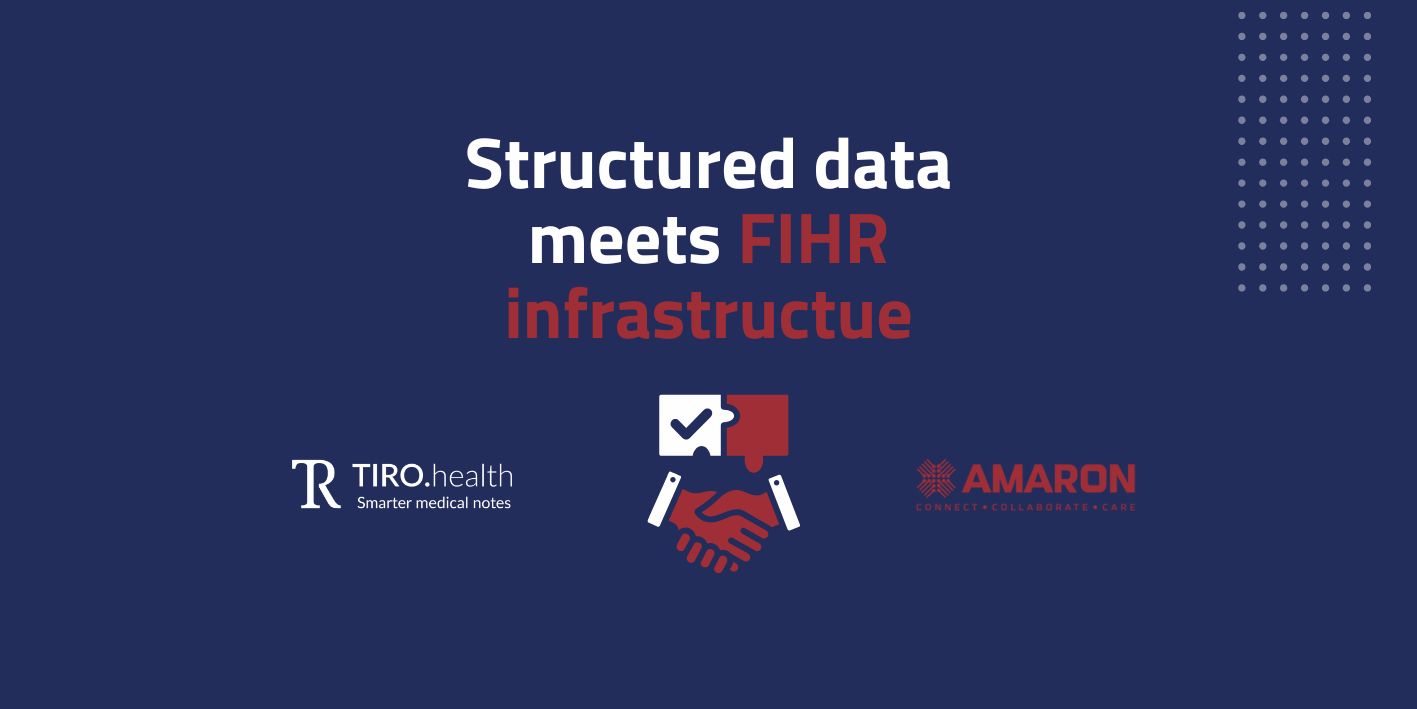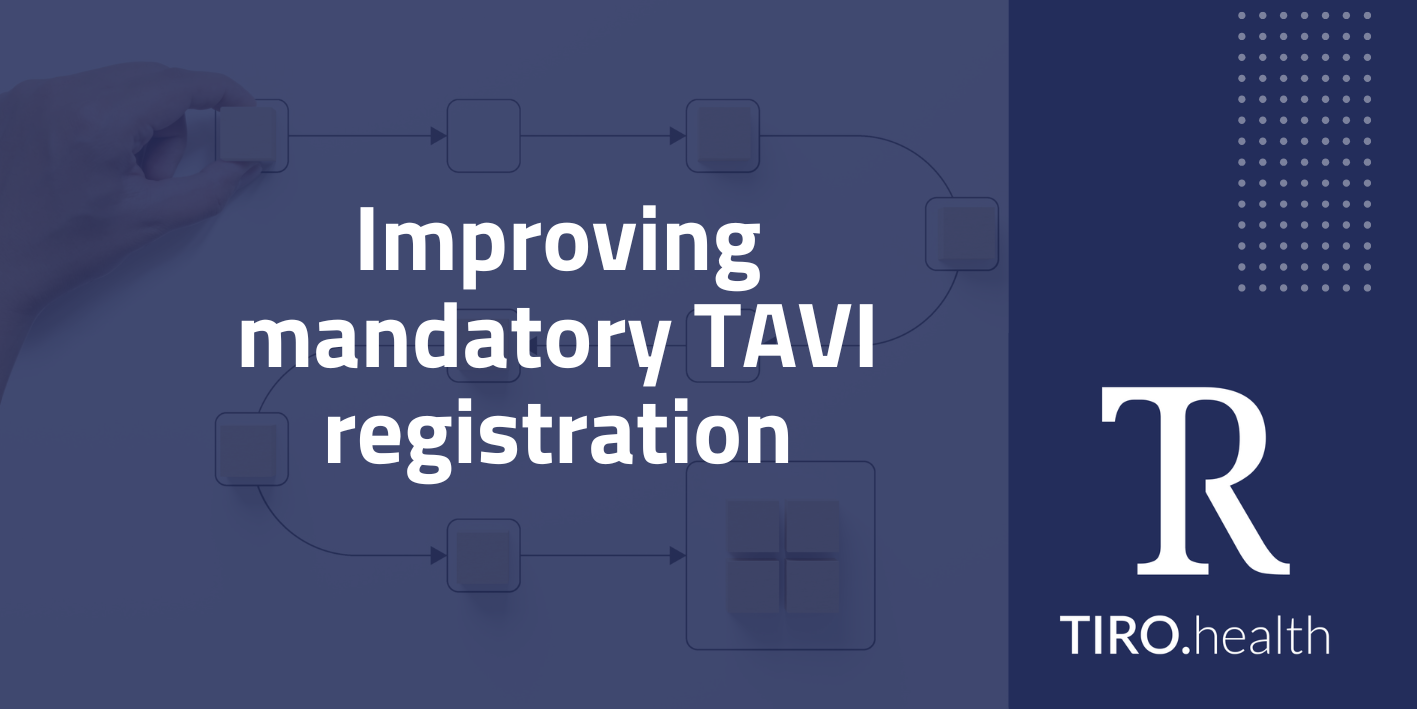SNOMED CT: the global standard shaping the future of medical documentation
Worldwide, healthcare institutions are transitioning to structured diagnosis registration with SNOMED CT (Systematized Nomenclature of Medicine Clinical Terms), often years before it becomes legally mandated. This early adoption reveals a fundamental transformation in how we collect, process, and share medical data. For Belgian healthcare institutions, this transition becomes particularly urgent. The Federal Public Service Health published a clear roadmap positioning Belgium as an early adopter, with 2027 as the target year for SNOMED CT implementation of primary diagnoses.
From narratives to structured data: the evolution of medical documentation
Medical records have consisted of free text for centuries, where physicians described what they saw, felt, and concluded. "Patient presents with chest pain, possibly related to stress" would be neatly documented but remained unreadable and unanalyzable for computer systems.
This narrative approach worked adequately in an era of paper records and local healthcare delivery. However, in our modern, connected healthcare system, free text forms a fundamental barrier to progress. Crucial medical information remains hidden in text paragraphs, inaccessible for automated analysis, clinical decision support, or cross-border research.
The transition to structured reporting represents a paradigm shift where standardization, interoperability, and data-driven healthcare take center stage. This is where SNOMED CT proves its value as the global lingua franca of medical terminology.
What is SNOMED CT? A complete definition and explanation
The definition of SNOMED CT
SNOMED CT (Systematized Nomenclature of Medicine Clinical Terms) is the world's most comprehensive, multilingual clinical healthcare terminology. It is a systematically organized collection of medical terms used to capture, store, and exchange clinical information in electronic health records in a standardized manner.
Developed and maintained by SNOMED International, a not-for-profit organization, SNOMED CT encompasses more than 350,000 active concepts covering the full breadth of clinical medicine, from anatomy and clinical findings to procedures and pharmaceutical products.
Core components of SNOMED CT
Concepts: Each medical concept receives a unique numeric identifier. "Myocardial infarction" has code 22298006, which means the same thing worldwide.
Descriptions: Each concept has multiple textual descriptions:
- Fully specified name (FSN): The precise, unambiguous definition like "Myocardial infarction (disorder)"
- Preferred Term: The most commonly used clinical term like "Heart attack"
- Synonyms: Alternative names like "MI" or "Acute myocardial infarction"
Relationships: Connections between concepts that provide meaning and context:
- Is-a relationships: "Myocardial infarction" IS A "Ischemic heart disease"
- Defining attributes: "Myocardial infarction" HAS "Finding site" = "Heart muscle tissue"
Why SNOMED CT is unique
Clinical coverage: Unlike administrative coding systems like ICD-10, SNOMED CT is specifically designed for clinical documentation. It can describe precise clinical situations that go beyond just diagnoses.
Compositionality: SNOMED CT can compose complex clinical concepts from simpler parts. A concept like "Acute anterior wall myocardial infarction" can be built from components "Acute", "Myocardial infarction" and "Anterior wall of heart".
Multilingual support: SNOMED CT is translated into more than 20 languages, where numeric codes remain universal while textual descriptions are adapted locally.
Post-coordination: Clinicians can create new concepts by combining existing concepts with relationships, allowing the terminology to adapt to new clinical needs without central updates.
The 19 top-level hierarchies of SNOMED CT
SNOMED CT organizes all concepts into 19 main categories:
- Clinical finding: Symptoms, signs, diagnoses
- Procedure: Therapeutic and diagnostic interventions
- Observable entity: Measurable properties
- Body structure: Anatomical parts
- Organism: Living beings including microorganisms
- Substance: Chemical and biological substances
- Pharmaceutical/biologic product: Medications and biologicals
- Specimen: Material for laboratory examination
- Physical object: Medical devices and implants
- Physical force: Energy and forces
- Event: Incidents and situations
- Environment/geographical location: Locations and environments
- Social context: Social circumstances
- Staging and scales: Classification systems
- Qualifier value: Modifying terms
- Record artifact: Document types
- Special concept: Metadata and navigation
- Context-dependent categories: Specific usage
- Linkage concept: For mapping to other systems
Practical examples of SNOMED CT in action

Example 1: Diabetes diagnosis
- Concept: 44054006 |Type 2 diabetes mellitus (disorder)|
- Hierarchy: Is a → Diabetes mellitus → Endocrine disorder → Disorder
- Relationships: Has associated morphology → Degenerative abnormality
- Clinical value: Automatic linking to diabetes guidelines, HbA1c monitoring protocols
Example 2: Surgical procedure
- Concept: 80146002 |Appendectomy (procedure)|
- Hierarchy: Is a → Excision of structure → Surgical procedure → Procedure
- Relationships: Procedure site → Appendix structure; Method → Excision
- Clinical value: Automatic post-operative care pathways, complication tracking
Example 3: Medication
- Concept: 387517004 |Paracetamol (substance)|
- Hierarchy: Is a → Analgesic → Pharmaceutical product
- Relationships: Has active ingredient → Paracetamol; Route of administration → Oral
- Clinical value: Dosage checks, allergy alerts, interaction warnings
How SNOMED CT differs from other medical coding systems
SNOMED CT vs. ICD-10
- ICD-10: Primarily for mortality, morbidity and billing; limited clinical details
- SNOMED CT: Extensive clinical details, procedures, anatomy and pharmacology
- Advantage: SNOMED CT offers granularity that ICD-10 lacks for clinical decision support
SNOMED CT vs. LOINC
- LOINC: Specialized in laboratory and clinical observations
- SNOMED CT: Broader scope including diagnoses, procedures and anatomy
- Complementary: Both systems work together, LOINC for "what is measured", SNOMED CT for "what is found"
SNOMED CT vs. local terminologies
- Local systems: Limited scope, no interoperability
- SNOMED CT: Global standard, full semantic interoperability
- Advantage: International data exchange and research collaboration
The governance structure of SNOMED CT
SNOMED International
- Owner and maintainer of SNOMED CT
- 41 member countries worldwide
- Responsible for release cycles (twice yearly)
- Quality control and content development
National release centers
- Translation to local languages
- National extensions for country-specific concepts
- Training and support for local implementations
- Mapping to national coding systems
International Health Terminology Standards Development Organisation (IHTSDO)
- Former name of SNOMED International
- Established governance principles for SNOMED CT
- Developed technical specifications and release formats
Frequently asked questions about SNOMED CT
What does the abbreviation SNOMED CT stand for?
SNOMED CT stands for Systematized Nomenclature of Medicine Clinical Terms. It is the evolution of the original SNOMED system (Systematized Nomenclature of Medicine) that was developed in the 1960s by the College of American Pathologists.
How many concepts does SNOMED CT contain?
SNOMED CT contains more than 350,000 active concepts, with over 1 million descriptive terms in English. The system grows continuously with approximately 2,000-3,000 new concepts per year.
Is SNOMED CT free to use?For SNOMED International member countries (including Belgium), SNOMED CT is freely available for all use cases within national borders. For commercial use outside member countries, licenses are required.
How often is SNOMED CT updated?
SNOMED CT has two official releases per year (January and July), with interim patches for urgent corrections. Each release contains new concepts, improved definitions and bug fixes.
Can SNOMED CT be combined with other coding systems?
Yes, SNOMED CT is designed for interoperability. Official maps exist to ICD-10, ICD-O-3, and other important classification systems, enabling dual coding.
Which languages support SNOMED CT?
SNOMED CT is available in more than 20 languages, including Dutch, French, German, Spanish, and many others. The numeric concept codes remain universal, only the textual descriptions are translated.
Technical aspects of SNOMED CT
Release formats and distribution
- RF2 (Release Format 2): The standard distribution format, consisting of tab-separated value files
- FHIR Terminology Services: Modern API-based access via HL7 FHIR standards
- OWL (Web Ontology Language): Formal logical representation for reasoning tools
Expression syntaxSNOMED CT expressions use specific syntax for composition:
64572001 |Disease (disorder)| : 116676008 |Associated morphology (attribute)| = 56246009 |Inflammation (morphologic abnormality)|- This expression describes "a disease characterized by inflammation"
Subset mechanisms
- Reference sets: Defined collections of concepts for specific use cases
- Value sets: Bindings to specific data elements in templates
- Extension modules: National or organization-specific additions
Quality assurance
- Description Logic: Formal logic for consistency checking
- Machine reasoning: Automatic detection of equivalent concepts
- Content validation: Multi-level review processes for new concepts
SNOMED CT in the context of health information standards
Semantic interoperability stack
- Syntax layer: FHIR, HL7 v2, CDA for message structure
- Semantic layer: SNOMED CT for meaning and context
- Pragmatic layer: Implementation guides for specific use cases
Integration with other standards
- LOINC: For laboratory and observation identifiers
- RxNorm: For medication and dosage information
- UCUM: For units of measurement
- DICOM: For medical imaging metadata
This multi-standard approach, as extensively described in our health technology standards guide, creates a comprehensive ecosystem for healthcare interoperability.
SNOMED CT: the semantic foundation of modern healthcare
This systematic organization makes SNOMED CT more than just a dictionary - it becomes a semantic framework that helps computers understand, interpret and process medical information. Each medical term gets not only a unique, universal identifier, but also a rich context of relationships and meanings.
This standardization creates unprecedented opportunities for:
- Automatic patient identification: When a cardiologist codes a heart attack, a researcher can automatically identify this patient for heart failure studies
- Clinical decision support: Systems can automatically suggest relevant guidelines, medication interactions or treatment protocols
- Quality monitoring: Real-time dashboards monitor treatment results and identify improvement opportunities
At Tiro.health, we have experienced how this semantic precision directly translates to improved patient care in our multicentric quality benchmarking projects.
Global legislative pressure accelerates SNOMED CT adoption
Belgian pioneer strategy
Belgium is positioning itself as a European leader in structured terminology adoption. According to the Belgian National Release Center's 2024 roadmap, presented to SNOMED International, Belgium aims to implement SNOMED CT across its healthcare system with the following timeline:
- 2025-2026: Preparation phase with pilot projects and training
- 2027: Mandatory SNOMED CT implementation for primary diagnoses
- 2029: Full compliance with European Health Data Space requirements
European Health Data Space: harmonization on continental scale
The European Health Data Space Regulation requires EU member states to use standardized terminologies for cross-border data exchange. This creates a coherent ecosystem where patient data can be safely and meaningfully shared between healthcare institutions, researchers and policymakers.
This international legislative pressure exponentially accelerates the adoption of structured registration. Hospitals that wait until the last moment risk falling behind in an increasingly competitive healthcare landscape.
Concrete benefits that exceed theory
Clinical decision support becomes intelligent
When a physician enters a specific SNOMED CT diagnosis, modern systems can automatically:
- Present relevant FHIR-based treatment guidelines
- Check medication interactions based on the precise diagnosis
- Suggest additional diagnostic tests
- Provide prognostic information based on comparable patient cohorts
Real-time quality monitoring
Structured SNOMED CT data enables continuous quality improvement through:
- Outcome tracking: Monitoring treatment results per diagnosis group
- Benchmarking: Comparing performance with national or international standards
- Trending analysis: Identifying patterns indicating quality problems or improvement opportunities
- Resource optimization: Analyzing and optimizing efficiency of care pathways
Research acceleration on unprecedented scale
The impact on medical research is transformational. Scientists can:
- Identify patient cohorts in minutes instead of months
- Set up multi-institutional studies with harmonized datasets
- Generate real-world evidence for new treatments
- Study rare diseases through international data selection
Tiro.health's experience with multicentric quality benchmarks shows how structured SNOMED CT data enables direct improvements in both clinical workflows and research capabilities.
Implementation strategies for successful SNOMED CT adoption
Phased rollout minimizes risks
Successful SNOMED CT implementation requires a systematic, phased approach:
Phase 1: Assessment and planning (3-6 months)
- Evaluation of current terminology usage
- Identification of priority departments and use cases
- Training of core team in SNOMED CT principles
Phase 2: Pilot implementation (6-12 months)
- Implementation in selected departments
- Development of local templates and workflows
- Iterative improvement based on user feedback
Phase 3: Organization-wide rollout (12-18 months)
- Phased implementation across all relevant departments
- Continuous training and support
- Integration with clinical decision support
Clinician-centric approach ensures adoption
Physicians and nurses must be involved in implementation from the beginning. Their input on workflows and user experience ultimately determines project success. This means:
- Co-creation of templates: Clinicians help design user-friendly interfaces
- Workflow integration: SNOMED CT must seamlessly fit into existing documentation processes
- Continuous feedback loops: Regular evaluation and adjustment of implementation strategies
Technological support facilitates adoption
Modern technologies significantly ease SNOMED CT implementation:
Intelligent search engines help clinicians quickly find the right codes through:
- Auto-complete functionality based on partial input
- Synonym recognition for alternative terminology
- Contextual suggestions based on specialty or department
AI-driven systems can automatically suggest SNOMED CT codes:
- Natural language processing analyzes free text
- Machine learning predicts most likely codes
- Hybrid workflows combine human expertise with AI support
Voice-recognition technology opens new possibilities:
- Hands-free coding during patient contact
- Spoken diagnoses automatically converted to SNOMED CT codes
- Reduced documentation burden increases clinician acceptance
Tiro.health's integrated SNOMED CT solution
At Tiro.health, we have developed a comprehensive platform that addresses every aspect of SNOMED CT implementation. Our solution seamlessly integrates SNOMED CT terminology with FHIR-based data exchange, creating a unified ecosystem for clinical documentation.
Core capabilities of our platform
Source-based structured data capture: Intuitive templates that naturally integrate into clinical workflows without creating additional administrative burden.
Comprehensive terminology support: Built-in SNOMED CT, LOINC and ICD-10 integration with automatic mapping between different coding systems.
FHIR-native architecture: Full compliance with modern interoperability standards for seamless data exchange.
Multicentric research support: Seamless data sharing for quality benchmarking and research initiatives as demonstrated in our multicentric projects.
Regulatory compliance: Built-in support for European Health Data Space requirements and Belgian legislation.
Practical experience from multicentric implementations
Our multicentric quality benchmarking project shows concrete results of successful SNOMED CT implementation:
- 98% data completeness versus 77% with narrative reporting
- 60% reduction in time needed for cohort identification
- Improved cross-institutional collaboration through harmonized data
Challenges and realistic expectations
Complexity requires systematic approach
SNOMED CT contains more than 350,000 active concepts, which can feel overwhelming for new users. Successful implementation requires:
Gradual introduction: Start with core concepts relevant to specific specialtiesContext-sensitive support: Systems that suggest relevant codes based on clinical contextContinuous training: Ongoing education as users become familiar with the system
Change management becomes crucial
Structured registration fundamentally changes how clinicians document. Some physicians experience this as disruption of their usual working method. Effective change management includes:
- Clear communication about benefits for patient care
- Hands-on training in realistic clinical scenarios
- Peer champions who support colleagues during transition
- Iterative improvements based on user feedback
Technical integration requires expertise
Not all electronic health records support SNOMED CT equally effectively. Healthcare institutions may need to invest in:
- System upgrades or new health technology standards compatible solutions
- API development for seamless integration
- Training of IT teams in SNOMED CT implementation
The initial investment in training, technology and procedure adjustments can be significant. However, longitudinal studies show that long-term benefits far exceed these startup costs through improved efficiency, better outcomes and research opportunities.
Broader impact on research and innovation
Machine learning and AI get fuel
Structured medical data forms the essential foundation for the next generation of healthcare innovations. Machine learning algorithms need reliable, coded data to:
- Recognize diagnostic patterns
- Predict treatment outcomes
- Develop personalized treatment plans
- Implement early warning systems
Pharmaceutical research is accelerated
Pharmaceutical companies invest massively in real-world evidence studies based on structured hospital data. These studies:
- Accelerate new medications to market
- Optimize existing treatments
- Identify unmet medical needs
- Support regulatory approval processes
Personalized medicine comes within reach
Precise phenotyping with SNOMED CT enables personalized medicine by:
- Tailoring treatments to specific patient characteristics
- Identifying subgroups that respond better to certain therapies
- Minimizing side effects through better patient matching
- Targeting preventive interventions to high-risk populations
Value-based healthcare: the shift from volume to quality
Quality-based financing
The transition to value-based healthcare requires accurate measurement of treatment outcomes. SNOMED CT enables this measurement through:
- Consistent registration of diagnoses, procedures and outcomes
- Benchmarking between healthcare institutions
- Transparent quality indicators
- Evidence-based resource allocation
Health insurers can introduce quality-based payments based on structured data, where hospitals that achieve better results for specific conditions are financially rewarded.
Continuous improvement through data-driven insights
This development stimulates systematic quality improvement as departments can:
- Monitor their performance in real-time
- Identify and implement best practices
- Measure interventions for effectiveness
- Set benchmarks against national or international standards
International collaboration and data standards
Global research collaboration
SNOMED CT facilitates unprecedented international collaboration in medical research. When hospitals worldwide use the same coding systems:
- Research results can be easily combined
- Larger, statistically more powerful studies emerge
- Knowledge is shared faster between continents
- Rare diseases can be studied more effectively
Harmonized pharmaceutical development
This standardization becomes exponentially more important as pharmaceutical development becomes more global. Companies can:
- Combine data from different countries
- Generate evidence faster for new treatments
- Harmonize regulatory pathways between different markets
- Scale real-world evidence studies to international cohorts
The European Health Data Space: blueprint for the future
Model for global adaptation
The European Health Data Space Regulation forms an ambitious model for international data exchange that is being followed worldwide. By requiring standardized terminologies, Europe creates:
- A coherent ecosystem for cross-border healthcare
- Harmonized datasets for continental research
- Interoperable systems that support patient mobility
- A template for other regions to follow
Belgian leadership position
Belgium's early implementation strategy from 2027 positions the country as an innovation leader within this European vision. The experience gained with SNOMED CT implementation:
- Serves as a practical example for other EU member states
- Creates expertise that is exportable to other markets
- Positions Belgian health tech companies as global leaders
- Attracts international research collaborations
Practical preparation steps for healthcare institutions
Immediate actions for 2025
For healthcare institutions that have not yet started SNOMED CT preparation:
Step 1: Baseline assessment
- Evaluate current state of terminology usage
- Identify departments with existing structured reporting experience
- Analyze technical readiness of IT infrastructure
Step 2: Stakeholder alignment
- Involve clinical champions from different specialties
- Secure executive sponsorship for multi-year implementation
- Develop business case based on concrete benefits
Step 3: Pilot planning
- Select departments for pilot implementation
- Define success metrics and evaluation criteria
- Plan training and support activities
Step 4: Technology evaluation
- Assess current EHR capabilities for SNOMED CT
- Evaluate external solutions like Tiro.health's platform
- Plan integration with existing health technology standards
Long-term strategic planning
2025-2026: Foundation building
- Implement pilot programs in selected departments
- Train core teams in SNOMED CT principles and best practices
- Develop change management strategies for organization-wide adoption
2027: Compliance deadline
- Achieve full SNOMED CT implementation for primary diagnoses
- Ensure integration with FHIR-based systems for interoperability
- Begin expansion to secondary diagnoses and procedures
2028-2029: European readiness
- Full compliance with European Health Data Space requirements
- Optimize workflows for cross-border data sharing
- Leverage advanced analytics and AI capabilities enabled by structured data
The future of connected care
Ambient AI and voice-enabled documentation
The future of SNOMED CT implementation seamlessly integrates with emerging technologies. Ambient AI scribe technology makes it possible to:
- Automatically code natural conversations with SNOMED CT
- Reduce documentation burden without losing precision
- Provide real-time clinical decision support during patient contact
- Optimize workflows for maximum clinical efficiency
Learning health systems become reality
Structured SNOMED CT data forms the foundation for learning health systems where:
- Clinical decisions are informed by real-time analytics
- Treatment protocols are automatically optimized
- Predictive models help with early intervention
- Continuous improvement is driven by data insights
At Tiro.health, we see this future already taking shape in our multicentric implementations, where structured data directly translates to improved patient outcomes and operational efficiency.
Conclusion: the unstoppable transformation
SNOMED CT implementation represents more than a technical upgrade or compliance requirement. It symbolizes a fundamental shift toward evidence-based, data-driven healthcare where clinical decisions are based on robust, interoperable datasets rather than intuition or local traditions.
Healthcare institutions that now invest in structured terminology position themselves as leaders in the digital transformation of healthcare. They build the foundation for innovations that emerge from the rich, semantically structured datasets that SNOMED CT enables.
With Belgium's clear roadmap toward 2027 and the European Health Data Space requirement in 2029, the direction is irreversible. The silent revolution has gained momentum and is evolving into an explicit, global transformation of medical documentation.
For healthcare institutions, the question is no longer whether they will transition to SNOMED CT, but how quickly and effectively they can realize this transition. Tomorrow's patients deserve the benefits of structured, evidence-based healthcare, and that future begins with the decisions we make today.
The implementation of SNOMED CT, supported by platforms like Tiro.health's comprehensive solution, opens the door to a new era of precision medicine, international collaboration and continuous improvement in healthcare delivery. The silent revolution is getting louder, and the time to move is now.




